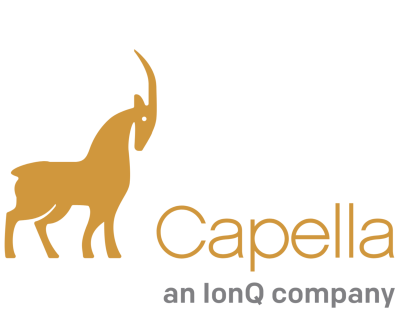DGI 2026
23 - 25 February 2026
Queen Elizabeth II Centre, London
Cloud Based Systems
John Day, ESRI, Interview: Cloud-based Systems | Geospatial Technology and Solutions
How Does Geospatial Work in the Cloud?
ESRI is one of the most well known names in geospatial intelligence and is certainly one of the largest forces for standards and systems unification in this area, and now they have their sights firmly set of making cloud technologies work for geospatial technology and data.
Many industries and many users of geospatial data in their domestic lives are already utilising the cost reducing, de-localised, multi-platform benefits of using cloud-based systems, but when dealing with vast datasets that need to move at high speed and with the utmost security how can it outperform current data architecture models?
We spoke to John Day, Director of Defence Business Development for ESRI at DGI 2012 to find out.
Video transcript:
ESRI is a huge name in the industry; everyone pretty much does know who you are already. But perhaps if we could talk specifically about what brings you down to DGI today?
ESRI’s pretty pervasive within the national security community, and a lot of the organisations are using our software. We’ve become this sort of backbone that allows them to fuse all their intelligence sources together. So, we’re very keen to come down to advise people on some of the evolution of the technology. A lot of companies now are looking at the use of the Cloud as a way to reduce some of the expenditure and give them the flexibility in setting up systems, not to have to invest in the capital, but actually fund this through operations.
So, what I was hoping to do at this conference is really begin to share some of the experiences of, “How does geospatial work in the Cloud?” and perhaps try and get beyond some of the hype and share some of the practical experiences.
I think one of the interesting things is everyone talks about the advantages but, obviously, there are going to be some disadvantages to off-siting all your data and hosting it with someone that could be thousands of miles away. So, what are the challenges that come up in the Cloud-based services?
I think, for this community, one of the biggest concerns is security. If you don’t know where the data is, you don’t know what’s happened to it; and that’s the challenge for the public Cloud, where you’re basically outsourcing the ownership of the systems and all that to companies like Amazon. Certainly in the US, we’re looking at government regulations and standards to allow us to do that, but that doesn’t mean you can’t have a private Cloud, but then there’s a lot more complexity, particularly from the security aspects.
So, security is always the paramount, the top issue that people address, but then when you look at the nature of the geospatial data and the nature of the analysis, a lot of the general hype about the Cloud is yet to be validated and companies like Amazon who are working with us to host geospatial solutions are learning a lot of experiences by large data imagery, geospatial databases, where to put the analysis in relation to the data, what sort of mission-critical applications might work and which ones really don’t.
So, there actually are a lot of lessons beginning to come out and what I realised was that there hasn’t been a way to share this information very thoroughly in the past, so one of the main reasons we’re here is to begin to help people understand how to get beyond the hype in general with the Cloud to the specifics of geospatial in the Cloud.
Interviewer: Perhaps if you can tell us a little bit more specifically then about that and how that all is starting to come together, how people are starting to share with confidence?
Well, I think the way to look at it is, you know, when you look at the Cloud, there are sort of really three ways people think about the Cloud. One is, basically, you know, software-as-a-service, and there are now solutions. Google Maps has been a solution software-as-a-service for a long time. You’re now beginning to see much more sort of subscription-based offerings. So, things like the Business Analyst Online for companies like Starbucks or a logistics solution online for people who actually need to route vehicles for despatch.
And there’s the platform-as-a-service, which really is about giving developers the opportunity to build applications where, again, they don’t have to worry about all the infrastructure, but the APIs are there.
Actually, what’s very interesting to me is that there were developers actually evolving. Users: well, we traditionally think it’s just a person who wants to use the system; is now able to create their own maps, create their own applications through some of the portals that are there.
And, ultimately, particularly for private clients, then you’re looking at the infrastructure-as-a-service, and Amazon and Microsoft and Terremark and other companies are offering that. The challenge for this community is again, “Well, I don’t want to buy that service from you. I want to create that infrastructure in my own organisation.” And that’s where you get back to, “Well, how do I secure that?” “What are the best practices?” “Where do I put my databases?”
So, it’s still a very complex issue, but people are looking at it from those three tiers. You know, with software-as-a-service, platform-as-a-service and infrastructure-as-a-service.
Yes, it does seem that we’ve seen a fundamental shift in what people are both looking for and indeed what those people are… As you said, it was very interesting the idea that developers are now users in the same way that analysts are now entirely different types of people; that it’s much more to do with understanding the processes that deliver the data rather than delivering those answers themselves.
Yes, I think you’re right, and what we’re really seeing is this shift from geospatial technology being a niche area for professionals to actually being pervasive. Everybody has a mobile device; everybody wants to be able to look at information, and with crowd-sourcing and some of those sort of social media… Basically now, we used to say every soldier was a sensor; now we say “everybody is a sensor”. Right, because we really can now contribute this information into the system so that the definition of sort of the user community has just basically expanded; it’s global.
The other thing you touched on which I think is another challenge for the industry is the analysis. The analysts are very specialist people with very strongly developed skills over many years and one of our challenges is capturing that information. Some of them like me are getting a bit older and maybe near retirement, and how do you keep and perpetuate that information? Well, one of the things that we’ve looked at is being able to capture the sort of analytical processes, the workflow they go through, being able to perpetuate that in a way that it can be shared through a server so that other people can validate that information, can train on that information; and, in many cases, a generalist, who doesn’t have any specialist knowledge, may be able to run that model in a mobile device.
So, one of the big challenges for the community is still we don’t just want dots on maps, we don’t just want information; what we want is intelligence. So, how can we continue to evolve and preserve the analytical capabilities that people have developed and make them available to everybody who’s on the network? That’s one of the challenges that we do face.
But, while we’re on the topic of challenges, actually, many people say to us, “You know, what is the biggest challenge for geospatial technology?” And actually that’s not the right question because the challenge isn’t the technology. The technology, like information technology, has evolved so far and so fast now that actually the biggest challenge for our customers is not, “What can the technology do?” It’s understanding what the technology can do, which again is why we’re here, and then it’s managing and governing that.
If you think about a Cloud organisation, that’s a huge challenge for a military or an intelligence organisation that is used to stovepipe systems where they own the server. Well, now, if you have this virtualised world, how do you manage that virtualised world, which is not now just for your organisation but actually for, say, the whole Ministry of Defence?
So, the biggest challenge we see now is governing the geospatial enterprise, and a lot of people are now looking at their policies, their organisations to enable them to do that. We’ve seen in the US the creation of an Army geospatial centre, an Army geospatial information officer, who’s trying to look across US Army systems rather than just letting each do it their own way. Because there are huge efficiencies and benefits if they can actually have an enterprise system. But the governance required to do that is not something that they traditionally have looked at.
It does feel that we’ve gone through this growth period where all the different companies have set up their own stovepipes, as you were saying, but actually we’ve got them, which is what people wanted at the time. Because we wanted people to specialise, we wanted people to get really good at what they do. Now we’ve got all these people offering all these different systems and viewpoints, we now need a way to bring it all together in a way that one person can look at and actually make sense of.
Well, and again, you know, great insight because what’s actually happened in the US, and I’m based in Washington so I work very closely with the Department of Defence and especially the US Army, what you’ve had, particularly in the Army intelligence community are separate systems designed to deal with each of the separate intelligences. So, signals intelligence, imagery intelligence, geospatial intelligence each have a separate system, but what people want to do is to fuse that and do the analysis together. So, there’s actually a strategy of collapsing all of those programmes down on to one system. It’s called the ‘Digital Common Ground System Army’. It is their intelligence component of the war-fighting activities, and it is one programme now; they’ve collapsed all the separate stovepipes on the one programme and what they’ve recognised is that the geospatial information is that integrated framework.
So, ESRI is part of that programme, and it’s a phenomenal programme; it’s a very successful programme. It’s got great leadership, it’s got great vision and ESRI is providing that foundation which then allows all the other intelligence to be brought together in an integrated system not a number of separate systems.
We’re also seeing the same thing happening in the command and control area, where they’ve had different command and control systems for many different activities: artillery, air defence or whatever, and they’re now collapsing those down into much more of a central command and control system, a single vehicle architecture, a single mobile architecture for dismounted personnel and again they were trying to collapse those multiple command and control systems down on to a much smaller number.
And then the third thing that makes sense is, in the past, we’ve always had this separation between ops and intel, or as the military would say between the G2 and G3 or the J2 and the J3, and it’s actually been a sort of religious war almost between those two organisations. That makes no sense, and in the US they now talk about the ops/intel convergence; they want to bring those together, which, for us, was actually quite funny because we already showed them a geospatial enterprise, but we overlaid it with a graphic that said, “This is your intel piece and this is your operations piece,” and when they said, “Well, we really want to converge them,” we said, “We’ll just take the overlay off because really it’s a continuous system.”
It was already there, and actually our founder, our president, Jack Dangermond, one of his messages is that GIS is an enabling technology that brings people together and breaks down barriers and we were actually able to take that message to the Army and say, “Just at the time that you’re thinking of bringing down barriers, let us show you how geospatial technology as an enterprise, as an end-to-end system can enable that.
So, it’s actually a very exciting time for the technology and the customers as they’re beginning to understand that, and that’s again one reason why I’m here because I think we have a lot of messages, the technology is very mature to help that and now what we want to do is help them govern that transition to enterprise; and, at the same time, not just the vision of an enterprise organisation, but some of the new architectures like the Cloud.
So, is that then the next thing we can expect to see from ESRI? What can we expect to see coming out then?
I think what you’re going to see is much more focus on helping customers understand how to look at GIS as an ecosystem. In the past, we’ve often supported customers in their requests to plug geospatial technology into separate programmes used as an ancillary technology, and I think what you’re going to see is the whole organisation both the technology and our activities geared to talking to the enterprise.
So, trying to help customers understand that it’s in their best interest to look at the return on investment, the efficiencies they can gain by looking at geospatial across the organisation. So, I don’t think you’re going to see anything radical in that respect, but what’s really going to enable that is the ability for people to discover information, to share that information and to collaborate. So, I would say the most dramatic thing that you’re going to see over the next couple of years is the creation of these portals. The US government has just created a portal on the internet to allow US citizens to see all unclassified government geospatial information.
That’s been public policy for a long time; they just didn’t have a mechanism to do it very efficiently. They have tried, but now through the sort of user interfaces of the portals the users don’t have to rely on a developer to go and build them a web app; they can go and find their own data, they can find their own tools and they can build their own applications and they can publish that themselves on the internet. And by the way, all of this infrastructure that we’ve built is in the Cloud.
So, the Cloud architecture and the way it’s going to enable the collaboration, the sharing, the discovery by everybody is really the message. It’s not just for the GIS professionals anymore. Yes, those people still need it to create the knowledge and maintain the servers, but really now you’re going to see this explosion in the use of geospatial information, and not just for dots on maps, you know, “Where am I? Where’s my house?” but actually form more complex analysis; which after all, is the goal here is to take information and turn it into actionable intelligence.
Which is the whole point about all these intelligence disciplines. We want to bring them together; we want to be able to derive information that isn’t really the obvious so we can take action. But we don’t want to put that only in the hands of the specialists or a few people buried in the basement; we want to give that ability to everybody.
If people want to find out more, where can they go?
John: Well, they can obviously go to esri.com, and on that website they can find all of our international offices and which has all the points of contact. So, start with esri.com, that’s the website, and through there you can find all of the points of contact anywhere in the world.




























































